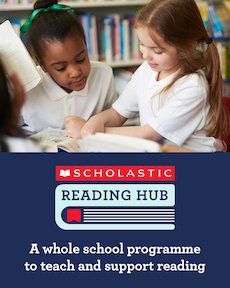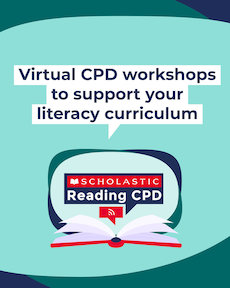Read & Respond | Research & Impact
Research & Impact
Read & Respond is a real-book reading programme for the classroom to ensure that children are accessing rich and engaging texts, both classic and contemporary. The accompanying teacher’s guides provide activities with a strong focus on all of the ‘big five’ plus oracy and reading for pleasure, as well as concentration on grammar, punctuation & spelling and writing. It allows the teacher to select from a bank of activities to meet the needs of their class and focus on specific areas focused around one text.
Read & Respond is underpinned by a wealth of research, here is a small selection with links to our research hub for additional reading.
Phonics and early reading
The Education Endowment Foundation says that ‘phonics approaches have been consistently found to be effective in supporting young readers’ and the Department for Education in England in its document: Reading: the next steps, says “there is a substantial body of evidence which demonstrates that systematic synthetic phonics is the most effective method for teaching all children to read.” Check out our Research Hub for more research into phonics and early reading.
Oracy, oral language or speaking and listening
There is considerable research evidence to show that children achieve more highly when they have opportunities for talk. This being the case, Robin Alexander (2009) concluded that we should “Make a concerted effort to ensure that language, particularly spoken language, achieves its full potential as a key to cognitive development, learning and successful teaching.” Check out our Research Hub for more research into oracy.
Vocabulary
”...the size of a child’s vocabulary is the best predictor of success on future tests and children with a poor vocabulary at five are four times more likely to struggle with reading in adulthood and three times more likely to have mental health issues” (Law, J., Charlton, J., Asmussen, K. (2017). Language as a Child Wellbeing Indicator. Early Intervention Foundation/Newcastle University) in Why Closing the Word Gap Matters, OUP, 2019.
Specific vocabulary instruction can have a positive effect on children’s reading comprehension (Stahl and Fairbanks, The Effects of Vocabulary Instruction: A Model-based Meta-analysis, Review of Educational Research Spring 1986, Vol 56, No 1 pp72-110) Check out our Research Hub for more research into vocabulary.
Fluency
Keith Topping’s (1987) research into assisted paired reading found that this type of reading could accelerate a reader’s progress so that students who were previously making half a month’s progress for every month of teaching could be expected to make one and a half months’ progress when assisted reading was included in the curriculum. Check out our Research Hub for more research into fluency.
Shared Reading, or Whole-class Guided Reading
“Shared reading is a part of a balanced early literacy framework. The shared reading experience offers a way teachers can use engaging texts and authentic literacy experiences to help children develop the strategies necessary for effective, independent reading.” Button and Johnson, 1997. Check out our Research Hub for more research into shared reading.
Guided Reading
“In a study undertaken by Biancarosa, Bryk and Dexter (2010), teachers had professional development and coaching over a number of years to implement all elements of the guided reading framework. When they collected the data, based on 8500 children and 240 teachers, they found the average rate of child learning increased by 16% over the course of the first implementation year, 28% in the second year, and 32% in the third year – very substantial increases.” Check out our Research Hub for more research into shared reading.
Reading for Pleasure
“Reading enjoyment has been reported as more important for children’s educational success than their family’s socio-economic status (OECD,2002).” “Evidence suggests that there is a positive relationship between reading frequency, reading enjoyment and attainment (Clark 2011; Clark and Douglas 2011).” Check out our Research Hub for more research into independent reading.
Assessment
Feedback and assessment has a huge part to play in student achievement. The Education Endowment Foundation lists feedback as the joint highest impact of all strategies and Dylan William (2006) says ‘if you’re serious about raising student achievement you have to improve teachers’ use of assessment for learning’. Race et al. (2005) in 500 Tips on Assessment, say: ‘Nothing we do to, or for our students is more important than our assessment of their work and the feedback we give them on it. The results of our assessment influence students for the rest of their lives…’ Check out our Research Hub for more research into assessment.
Impact
John Hattie is an education researcher who has measured the effect of educational actions on children’s achievement. His research findings cover the impact of actions from the use of TAs to class size to the impact of specific teaching approaches such as small group tuition. Hattie’s insights mean that teachers can select teaching approaches and strategies based on how they will maximise their children’s achievements.
The measures that Hattie uses are called effect sizes. These range from –0.2 to 1.2 with an average effect size of 0.4. Hattie states that an effect size of 0.2 can be judged a small effect, 0.4 a medium effect and 0.6 a large effect on pupil outcomes. He terms 0.4 the hinge point or the effect size at which an initiative has a greater than average influence on achievement.
| Strategy | John Hattie Effect Size | Education Endowment Foundation Impact (months) |
|---|---|---|
| Vocabulary programmes | 0.63 | NA |
| Spelling programmes | 0.58 | NA |
| Oracy | NA | +5 |
| Phonics | 0.7 | +4 |
| Small group tuition | 0.47 | +4 |
Effect sizes taken from the Visible Learning website, ‘Visible Learning for Teachers’, Hattie, 2012 and from the Education Endowment Foundation Teaching and Learning Toolkit.



